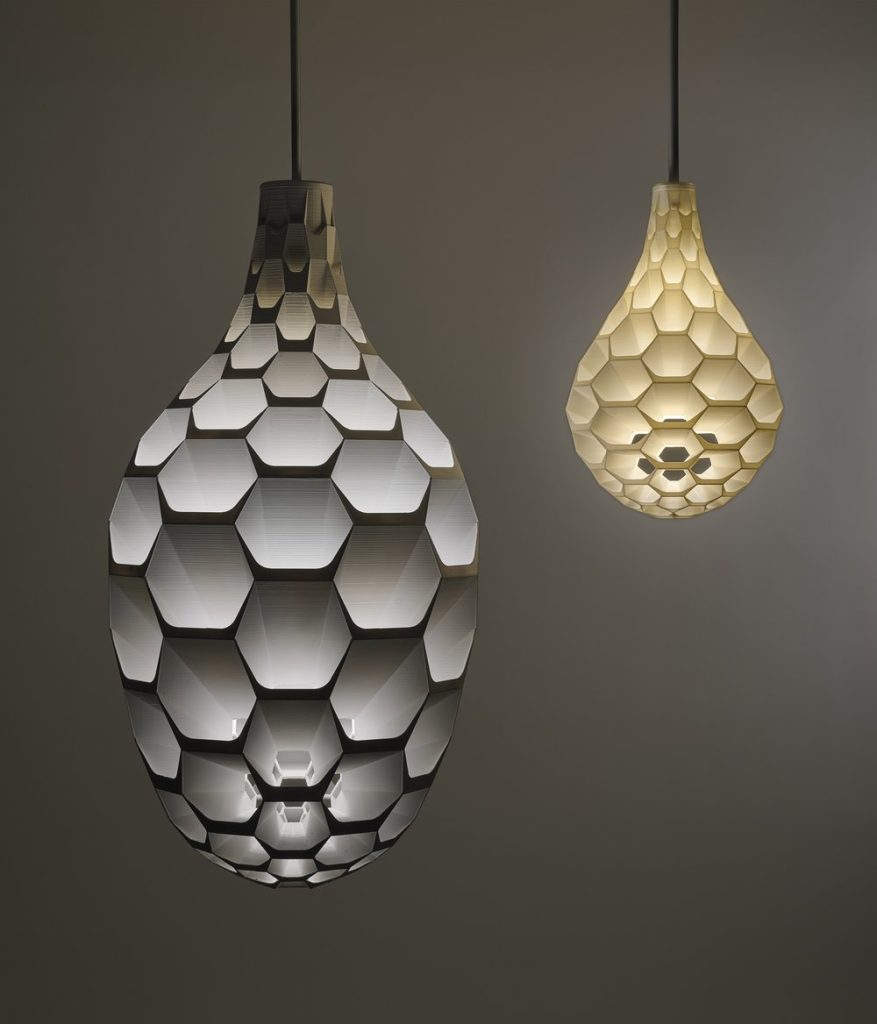The Hedron Pendant is a 3D-printed chandelier or pendant light made from PLA (Polylactic Acid). The shape is developed from a polyhedron, in this case, a 3D version of a hexagon or honeycomb, twisted and given an almost alien appearance. Poul Henningsen’s Artichoke Light (1958) was an inspiration for this project – in that the light source is only revealed on careful inspection.
The beautiful chandeliers have been precisely sculpted to generate distinctive, glare-free illumination. The stem is constructed using common lamp parts, and the 3D-printed shade is supported from within by a specially CNC-cut bracket that has no fasteners or moving parts.
While popular among users of 3D printers, PLA is often overlooked when choosing materials for consumer products. PLA has a relatively low melting point (around 150C) and it’s not the hardest or toughest plastic making it unsuitable for products that need to demonstrate impact resistance.
From an environmental perspective, an issue with PLA is that first-generation PLA is made from food crops such as sugar or maize. Second-generation PLA is made from waste from these crops and is, therefore, favorable as production does not compete with agricultural needs. In both cases, any traces of pesticides and fertilizers used to grow these crops might be found in PLA. We are not told which type of PLA has been used for this project.
This initiative by Mickus Projects demonstrates that there are consumer applications for which PLA is entirely suitable. But, in this case, you might want to check your bank balance first – prices range from $4,300 – $7,300, that’s US$ of course!
Mickus Projects claim that ‘sustainability and new fabrication techniques are inherent in the M.O. We search for clever ways to minimize the environmental impact of our products by calling attention to a sophisticated logic and intrinsic beauty’ – the Hedron Pendant is testament to fulfilling these objectives.
